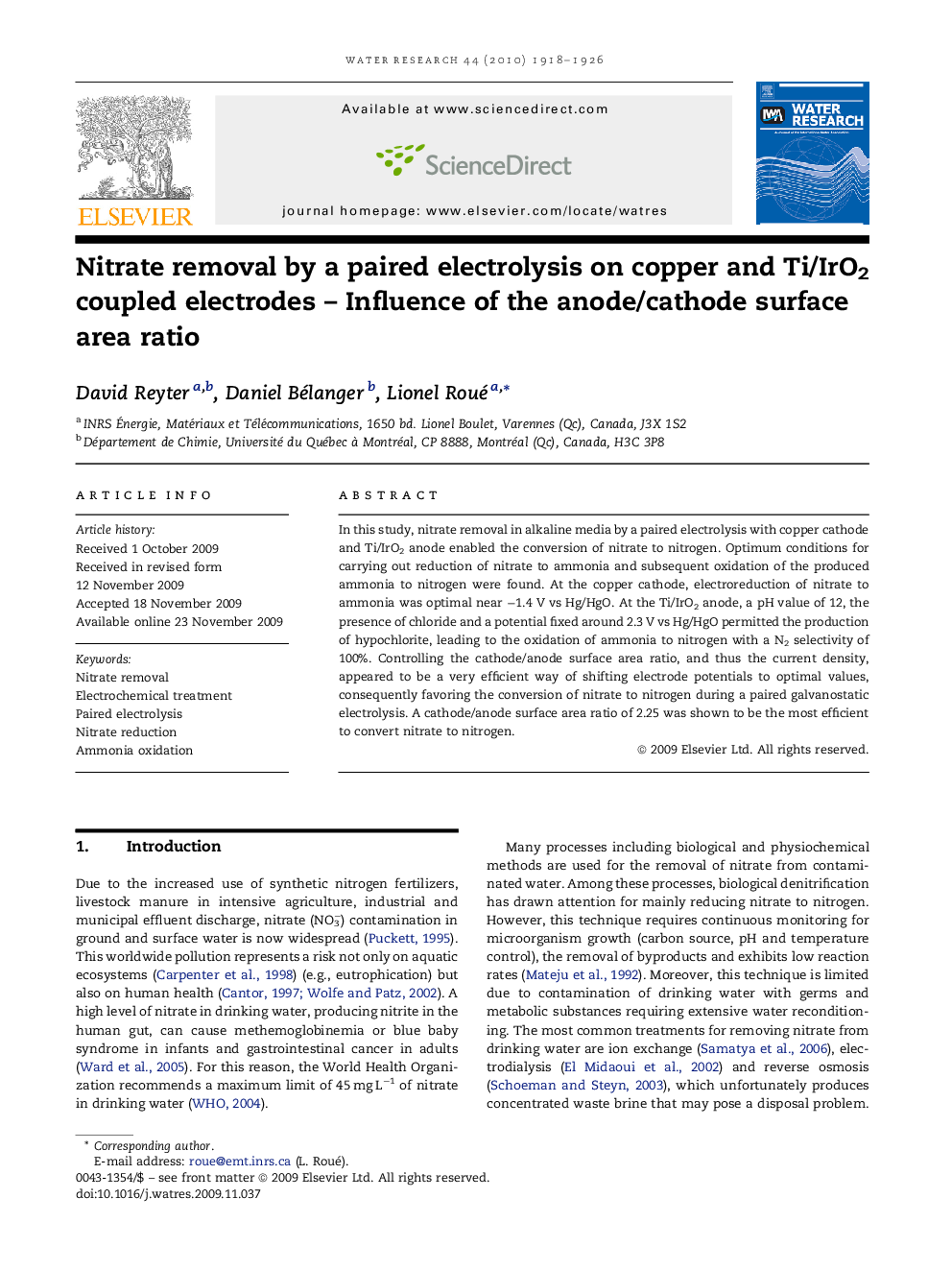| Article ID | Journal | Published Year | Pages | File Type |
|---|---|---|---|---|
| 4484171 | Water Research | 2010 | 9 Pages |
In this study, nitrate removal in alkaline media by a paired electrolysis with copper cathode and Ti/IrO2 anode enabled the conversion of nitrate to nitrogen. Optimum conditions for carrying out reduction of nitrate to ammonia and subsequent oxidation of the produced ammonia to nitrogen were found. At the copper cathode, electroreduction of nitrate to ammonia was optimal near −1.4 V vs Hg/HgO. At the Ti/IrO2 anode, a pH value of 12, the presence of chloride and a potential fixed around 2.3 V vs Hg/HgO permitted the production of hypochlorite, leading to the oxidation of ammonia to nitrogen with a N2 selectivity of 100%. Controlling the cathode/anode surface area ratio, and thus the current density, appeared to be a very efficient way of shifting electrode potentials to optimal values, consequently favoring the conversion of nitrate to nitrogen during a paired galvanostatic electrolysis. A cathode/anode surface area ratio of 2.25 was shown to be the most efficient to convert nitrate to nitrogen.
